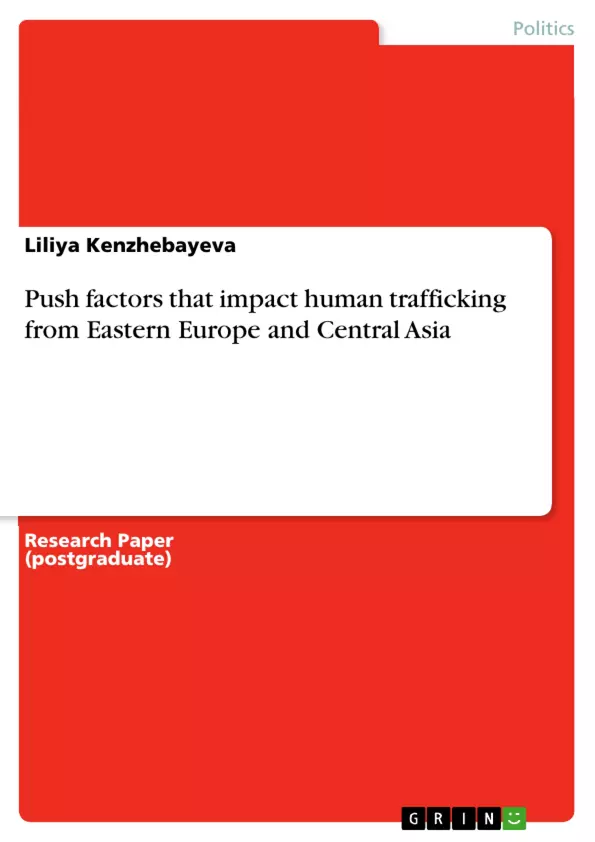Human trafficking is a global problem which was denounced by the international community as human rights abuse and determined to be as a modern form of a slavery. This article studies the push factors of human trafficking victims from Eastern Europe and Central Asia during the period of 2014 – 2017. The study provides a literature review, a regression analysis of variables that robustly explains trafficking such as income level due to the fact that people undertake risky migration, so they want to change their life for better.
Inhaltsverzeichnis (Table of Contents)
- Abstract
- Introduction
- Literature review
Zielsetzung und Themenschwerpunkte (Objectives and Key Themes)
This paper explores the push factors contributing to human trafficking from Eastern Europe and Central Asia between 2014 and 2017. The study aims to understand the complex dynamics driving this issue and identify key factors through a literature review and a regression analysis of relevant variables. The paper focuses on the impact of income levels, gender discrimination, and crime prevalence in the region.
- The prevalence and impact of human trafficking in Eastern Europe and Central Asia.
- The role of income levels and economic disparities in driving human trafficking.
- The impact of gender discrimination and social vulnerabilities on victims of trafficking.
- The relationship between crime prevalence and human trafficking activities.
- The importance of effective governance and international cooperation in combating trafficking.
Zusammenfassung der Kapitel (Chapter Summaries)
- Abstract: The abstract provides a concise overview of the study's objectives, methodology, and findings. It highlights human trafficking as a global problem, particularly in Eastern Europe and Central Asia, and emphasizes the role of push factors like income levels in influencing this phenomenon.
- Introduction: The introduction defines human trafficking, highlighting its prevalence and impact worldwide, particularly in Eastern Europe and Central Asia. It presents statistics on the number of victims and the economic gains of trafficking networks. The introduction also discusses the historical context of the region, linking the collapse of the Soviet Union to the increase in human trafficking.
- Literature review: This chapter reviews existing research on the push factors driving human trafficking in Eastern Europe and Central Asia. It explores studies focusing on the role of governance, income levels, gender discrimination, and crime prevalence. The chapter highlights the challenges of collecting reliable data on human trafficking due to its clandestine nature and the lack of internationally comparable statistics.
Schlüsselwörter (Keywords)
The paper primarily focuses on the following keywords: human trafficking, push factors, Eastern Europe, Central Asia, income level, gender discrimination, crime prevalence, regression analysis, governance, migration, exploitation.
- Arbeit zitieren
- Liliya Kenzhebayeva (Autor:in), 2020, Push factors that impact human trafficking from Eastern Europe and Central Asia, München, GRIN Verlag, https://www.grin.com/document/907123



